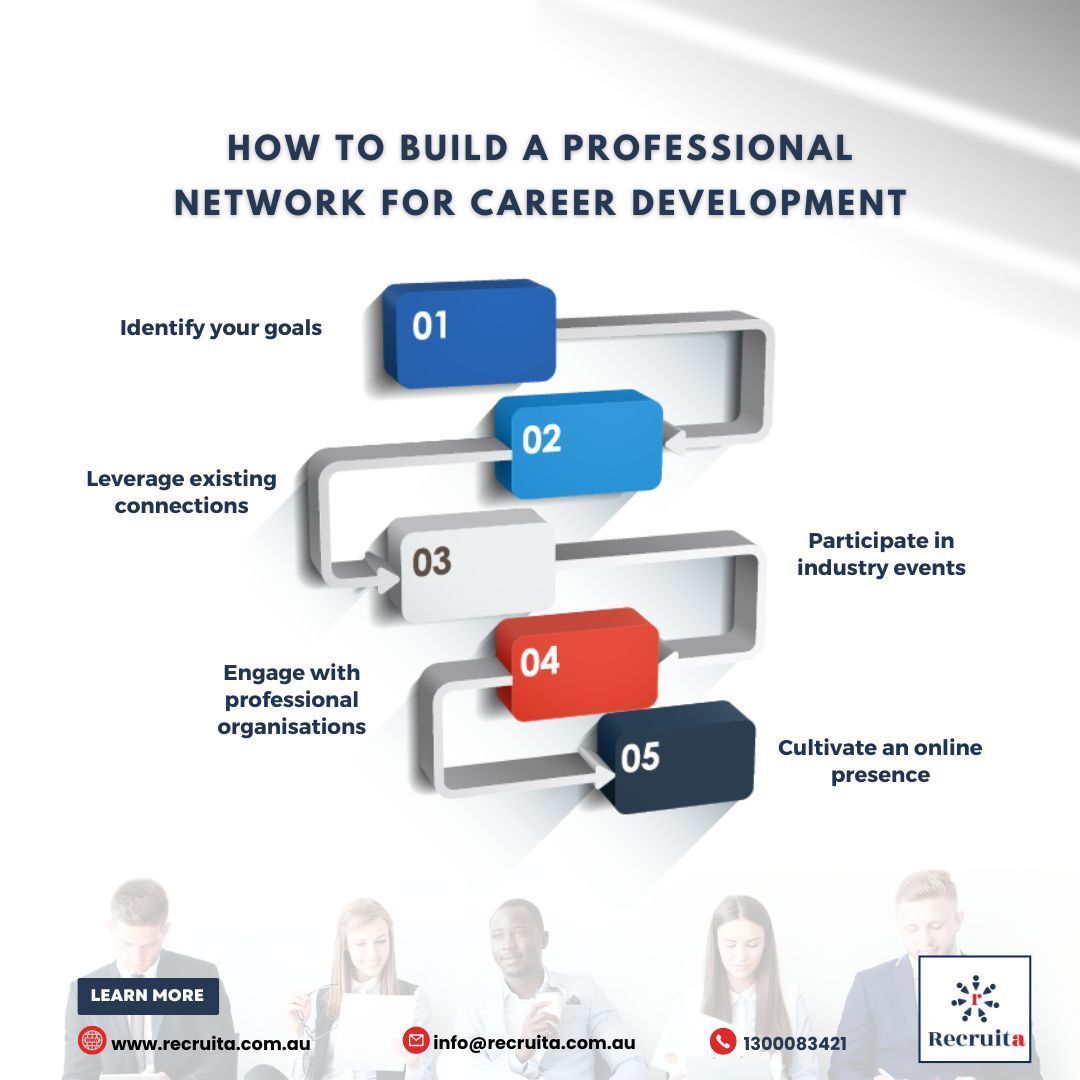The evolving role of technology in recruitment
The evolution of technology in recruitment has significantly transformed the way companies attract, engage, and hire top talent.
Many innovative tools and platforms, from AI-powered candidate screening systems to sophisticated recruitment software, have driven this transformation.
These are designed to streamline processes, automate time-consuming tasks, enhance efficiency, and ultimately deliver better hiring outcomes.
In this blog, we will discuss the role of AI in transforming recruitment practices. We will also cover the many benefits of using recruitment technology, including streamlining and automation, facilitating remote recruitment, and providing data-driven insights.
Lastly, we’ll delve into the challenges recruitment technology presents to the sector and the latest AI developments. This covers advanced candidate matching systems, gamified assessment tools, video interviewing software, recruitment marketing platforms, and future tech for recruiters.
To understand the true impact of technology in recruitment, we should really start at the beginning. So, before we delve into the latest developments in tech, let’s start by taking a closer look at the rise of technology in recruitment!
The rise of technology in recruitment
Historical perspective on the use of technology in recruitment
The recruitment industry has a rich history, with its roots dating back to ancient times. However, the arrival of technology significantly transformed the way recruitment is conducted.
In the early days, recruitment was a manual process, heavily reliant on physical job advertisements, paper CVs, and face-to-face interviews. The birth of social media and the digital revolution marked a significant turning point, making recruitment a lot more interactive.
The 1970s saw a shift in the recruitment landscape, with agencies transitioning from working with job seekers to working for companies. Large corporations began outsourcing their recruitment processes, marking the beginning of the modern recruitment industry.
Shifting from traditional methods to tech-driven strategies
The rise of the internet in the late 20th century brought about a seismic shift in recruitment strategies. The traditional methods of newspaper advertisements and walk-in interviews gave way to online job portals and email applications.
Advancements in tech have led to cloud-based recruitment technology and Applicant Tracking Systems (ATS), which automated, improved, and streamlined the recruiting process.
Today, technology has revolutionised how employers and recruiters find potential candidates. The shift from traditional methods to tech-driven strategies has been facilitated by a host of innovative platforms and tools designed to enhance efficiency and deliver better hiring outcomes.
The role of AI in modern recruitment practices
Artificial Intelligence (AI) has transformed HR and the recruitment industry, reshaping traditional practices and introducing new efficiencies.
AI helps automate data collection and analysis, enabling recruiters to efficiently process large volumes of information and identify potential red flags or discrepancies.
This has significantly reduced the time-to-hire and improved the quality of hires.
AI recruitment can also minimise hiring bias. By focusing on objective criteria, AI provides a more comprehensive and fair assessment of a candidate’s background. This has led to more diverse and inclusive workplaces, which are known to foster innovation and drive business performance.
Moreover, AI has revolutionised the candidate sourcing and pre-selection stages of the recruitment process.
AI-powered tools can sift through thousands of resumes in a fraction of the time it would take a human recruiter to identify the most suitable candidates based on the job requirements. This streamlines the recruitment process and ensures that no potential candidate is overlooked.
AI is also transforming the way recruiters engage with candidates. AI-powered chatbots, for instance, can provide real-time responses to candidate queries, improving the candidate experience and freeing up recruiters to focus on more strategic tasks.
Overall, AI is playing a pivotal role in modernising recruitment practices, driving efficiencies, reducing bias, and enhancing the overall quality of hires. As AI technology continues to evolve, its impact on the recruitment industry is set to grow, offering exciting possibilities for the future.
How AI and new tech for recruiters are transforming the hiring process
The role of AI in candidate sourcing, screening, and engagement
AI has technology in recruitment and here’s how: AI-powered recruiting uses algorithms to locate specific keywords in an applicant’s resume, thus helping hiring managers in intelligent candidate screening. This process, often referred to as ‘semantic search’, goes beyond simple keyword matching. It understands the context and the intent behind the words in a resume, allowing it to match candidates to job descriptions more accurately. This has significantly reduced the time-to-hire, with some companies reporting a 70% reduction in hiring time. Moreover, AI’s role in candidate screening extends to the evaluation of a candidate’s soft skills, such as communication and teamwork.
By analysing a candidate’s language use, tone, and speech patterns, AI can provide insights into these crucial yet often overlooked aspects of their profile.
The use of predictive analytics in making informed recruitment decisions
Predictive analytics is a powerful tool that is revolutionising the recruitment industry. By analysing historical data, predictive analytics can help recruiters make more informed decisions about which candidates are likely to succeed in a particular role. This streamlines the recruitment process and ensures the best candidates for each role are selected.
Predictive analytics works by identifying patterns in past recruitment data and using these patterns to predict future outcomes. This could include predicting which candidates are most likely to accept a job offer, which will perform well in a role, or which candidates will likely stay with the company in the long term.
One of the key benefits of predictive analytics is that it can significantly improve the quality of hires. By accurately predicting a candidate’s potential for success and fit within the organisation, predictive analytics can contribute to higher employee retention rates.
Hiring candidates who are more likely to thrive in their roles enhances job satisfaction, engagement, and long-term commitment.
Moreover, predictive analytics can help companies forecast hiring needs based on growth projections and employee turnover rates. This allows companies to proactively source candidates and reduce the time to fill critical roles.
The role of chatbots in improving the candidate experience
Chatbots are transforming the recruitment process, particularly in the initial stages. These AI-powered tools can provide instant responses to candidate queries, provide updates on the application process, and schedule interviews.
They can even interact with candidates in real-time, answering queries and providing information about the company and the role. This improves the candidate experience and allows recruiters to focus on more complex tasks.
Chatbots can analyse resumes and profiles, match candidates to suitable roles, and provide immediate feedback. This automation reduces manual effort for recruiters by automating repetitive tasks such as sending reminders, providing application process updates, shortening time-to-hire, and ensuring only the most qualified candidates proceed to the next stage.
The benefits of using recruitment technology
Streamlining and automation
Technology in recruitment has the power to streamline administrative tasks, freeing up valuable time for recruiters. With the help of AI and automation, tasks such as scheduling interviews, sending follow-up emails, and updating candidate information can be handled efficiently.
This allows recruiters to focus on more strategic aspects of their role, such as building relationships and developing effective recruitment strategies.
Facilitating remote recruitment
With the rise of remote work, technology has made it possible to recruit candidates worldwide. Video interviewing tools, virtual job fairs, and online onboarding programs have made recruiting, hiring, and onboarding candidates remotely easier.
This expands the talent pool and allows companies to hire the best candidates, regardless of their location.
Providing data-driven insights
Technology in recruitment also provides valuable data-driven insights that can help improve the recruitment process. For instance, analytics can provide information on the most effective recruitment channels, the average time-to-hire, and the quality of hires. These insights can help recruiters make informed decisions and continuously improve their recruitment strategies.
In conclusion, the use of technology in recruitment offers numerous benefits, from streamlining administrative tasks and enhancing employer branding to facilitating remote recruitment and providing data-driven insights. As technology continues to evolve, its impact on the recruitment industry is set to grow, offering exciting possibilities for the future.
The challenges of using technology in recruitment
Potential for bias in AI recruitment tools
While AI has the potential to reduce human bias in recruitment, it’s not entirely free from bias itself. AI algorithms are trained on data that may contain inherent biases, and these biases can be perpetuated and even amplified in the recruitment process.
For instance, if an AI tool is trained on data from a company that has historically hired a certain demographic of candidates, the tool may favour similar candidates in the future, potentially excluding qualified candidates from diverse backgrounds.
One example is when a hiring manager favours candidates with a specific education (a Harvard graduate over one from Oxford).
Suppose the AI algorithm is taught that these are the only worthwhile candidates. In that case, it will exclude more qualified candidates if they don’t graduate from Harvard.
In this way, unconscious bias can easily be trained into an AI recruitment tool.
The risk of over-reliance on tech and loss of human touch
While technology can streamline the recruitment process, there’s a risk of over-reliance on these tools at the expense of human interaction.
Recruitment is not just about matching skills to job requirements; it’s also about building relationships and assessing cultural fit, which requires human judgment. Over-reliance on technology can make the recruitment process feel impersonal for candidates, potentially impacting a company’s employer brand.
Challenges in keeping up with rapidly evolving technology trends
The pace of technological change presents another challenge. As new tools and technologies emerge, recruiters need to update their skills and knowledge to stay ahead continually.
This requires ongoing training and development, which can be time-consuming and costly. Additionally, implementing new technologies can disrupt existing processes and require significant change to management efforts.
Thinking machines are as smart as people
We tend to think machines and AI-powered tools are as intelligent as humans because they work so well. But they are only as good as their most recent update or how well they process data that day. We need to be aware of our own inherent bias of thinking machines are as smart as we are.
How many times has Google Maps taken you the wrong way, and you followed it because it told you to, even though you knew it was wrong?
While we can rely on AI technology in recruitment to help us in many ways, we need to remember that it doesn’t have the complex thought process humans do. It will never truly understand how years of experience in several different roles and fields can make a candidate a better choice for a position over someone that has followed a linear career path.
AI doesn’t understand nuance. Recruitment technology should always assist us, not replace human intelligence.
While technology offers numerous benefits in recruitment, it’s important to be aware of potential drawbacks. By understanding these challenges, companies can take steps to mitigate them and ensure that they leverage technology effectively in their recruitment processes.
The latest developments in recruitment technology
Candidate matching systems
Advanced candidate matching systems, also known as applicant tracking systems, or ATS are becoming increasingly sophisticated, using AI and machine learning to match candidates to job vacancies with greater precision.
These systems can analyse a wide range of data, including skills, experience, and even personality traits to find the best match.
These systems can analyse a wide range of candidate data beyond just skills and experience. It can also look at personality traits, cultural fit, and even career aspirations. This comprehensive analysis allows for a more holistic assessment of candidates, leading to better matches and ultimately better hiring outcomes.
ATS are highly scalable, making them suitable for companies of all sizes. They can handle large volumes of data and can be used to screen thousands of resumes in a short time. This makes them particularly useful for large-scale recruitment drives.
Gamified assessment tools
Gamified assessment tools are a new trend in recruitment technology. These tools use game elements to assess a candidate’s skills and abilities in a fun and engaging way. They can provide valuable insights into a candidate’s problem-solving abilities, creativity, and teamwork skills.
This recruitment technology is an interactive way to assess an applicant’s technical knowledge and soft skills, making the process more enjoyable and attracting top talent. It can also help to differentiate a company from its competitors, enhancing its employer brand.
Some people can talk a big game, but don’t always have the skills to back up what they say they can do. While other candidates may lack the ability to sell themselves in interviews but are very technically skilled and highly qualified. Gamified assessment tools give recruiters and employers a chance to see for themselves what candidates are capable of.
They can also provide a more objective assessment of candidates, unlike traditional interviews, which can be influenced by unconscious bias. Gamified assessments provide a standardised measure of a candidate’s skills and abilities.
Video interviewing software
Video interviewing software is becoming a standard tool in the recruitment process, especially with the rise of remote work. Platforms like HireVue, Harver or even Teams allow recruiters to conduct live interviews with candidates anywhere in the world, but they can also record interviews for later review and use AI to analyse candidate responses.
Video interviewing software is particularly beneficial for remote onboarding. It allows companies to conduct interviews, provide company orientations, and even conduct training sessions remotely. This is especially important for onboarding a global workforce, as it allows companies to reach candidates regardless of their geographical location. This not only saves time and resources but also allows companies to tap into a wider talent pool.
This technology can also play a significant role in boosting diversity and inclusion, by allowing companies to interview candidates from all over the world, eliminating geographical barriers and opening opportunities for people who are restricted to working from home due to medical reasons, carer responsibilities or physical limitations.
Recruitment marketing platforms
Recruitment marketing platforms are emerging as a key tool in attracting top talent. These platforms allow companies to create engaging employer brand content and distribute it across multiple channels, including social media, email, and job boards. They can also track the effectiveness of recruitment marketing campaigns and provide insights to improve future efforts.
By distributing content across multiple channels, recruitment marketing platforms help companies expand their reach and engage with a wider pool of potential candidates. Whether it’s through social media, email, or job boards, these platforms ensure that a company’s brand and job opportunities are visible to as many people as possible.
Recruitment marketing platforms also provide valuable data and analytics that can inform recruitment strategies. They can track the performance of different content types, channels, and campaigns, providing insight into what works best for reaching potential candidates. This data can be used to refine recruitment strategies and make them more effective.
The future of recruitment technology
Looking ahead, we can expect to see further advancements in recruitment technology. For instance, augmented reality could be used to provide virtual office tours, giving candidates a more immersive experience of the company culture. Additionally, blockchain technology could potentially be used for verifying candidate credentials, ensuring the authenticity and accuracy of the information provided by candidates.
The latest developments in recruitment technology are set to revolutionise the recruitment process, making it more efficient, effective, and candidate-friendly. As these technologies continue to evolve, they will undoubtedly shape the future of recruitment.
Conclusion
The role of technology in recruitment has seen a significant evolution, transforming the way companies attract, engage, and hire top talent. From advanced candidate matching systems and gamified assessment tools to AI recruitment tools, chatbots and recruitment marketing platforms, technology is reshaping the recruitment landscape.
These technologies offer numerous benefits, including increased efficiency, improved candidate experience, and enhanced ability to reach a wider pool of candidates. They also provide valuable data and insights that can inform recruitment strategies and decision-making.
In this context, working with tech-savvy recruiters becomes a strategic advantage for both candidates and companies. Technology recruiters, adept at leveraging the latest recruitment technology, can streamline the hiring process, ensuring that companies find the right fit efficiently. They utilise technology in recruitment to its fullest potential, from AI recruitment tools for intelligent screening to tech for recruiters that assists with candidate engagement and onboarding.
For candidates, these recruitment agencies offer a seamless and engaging experience, often enabled by AI and other innovative technologies. They ensure that candidates are matched with roles that align with their skills, experiences, and aspirations, thereby improving job satisfaction and retention in the long run.
However, while the benefits of technology in recruitment are clear, it’s equally important to maintain a balance with traditional, human-led strategies. Technology can support and enhance the recruitment process, but it can’t replace the human touch. Personal interactions, intuitive judgement, and relationship-building are central to recruitment and still play a crucial role.
As we move forward, recruiters should embrace the opportunities that technology offers, while also recognising the value of human connection. By striking the right balance, they can leverage the best of both worlds to attract the best talent.
In the ever-evolving world of recruitment, staying abreast of the latest technologies and trends is key. It’s clear that technology will continue to play a pivotal role in shaping the recruitment industry. However, it’s the combination of technology and human insight that will truly drive success in recruitment.
This post was written by: Charlotte Bosley-Plumb, Content Marketing Coordinator
Source: https://www.airswift.com/blog/technology-in-recruitment



